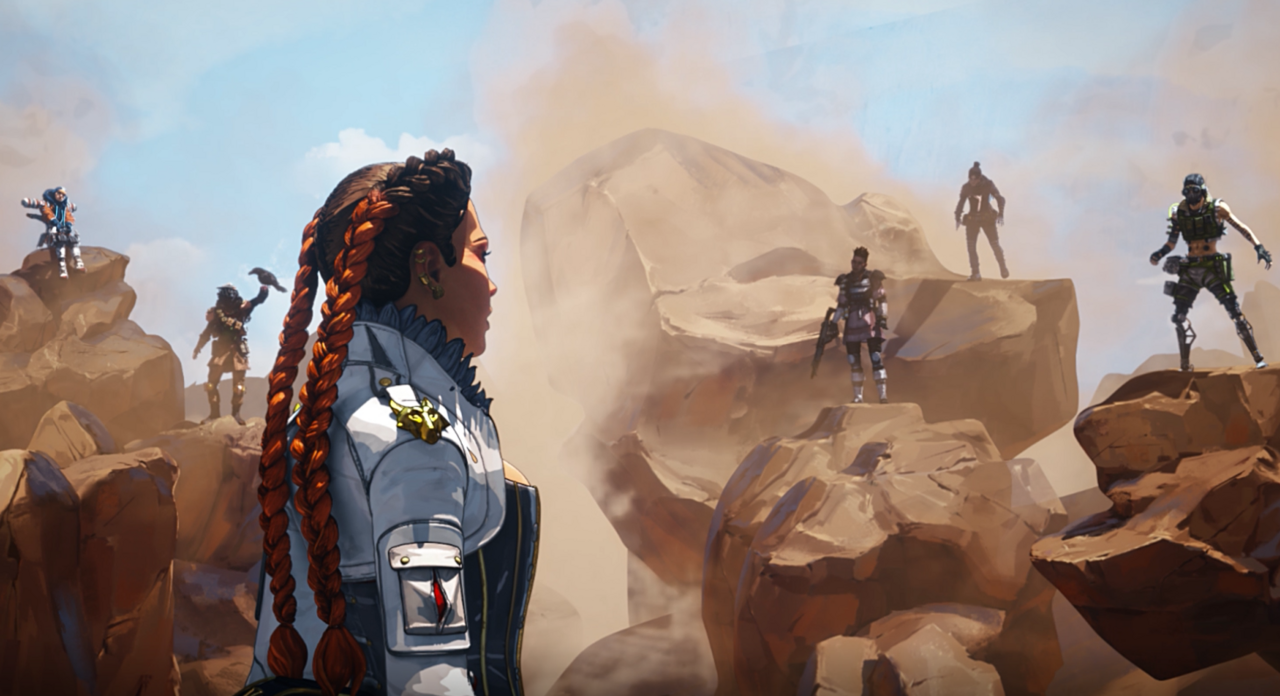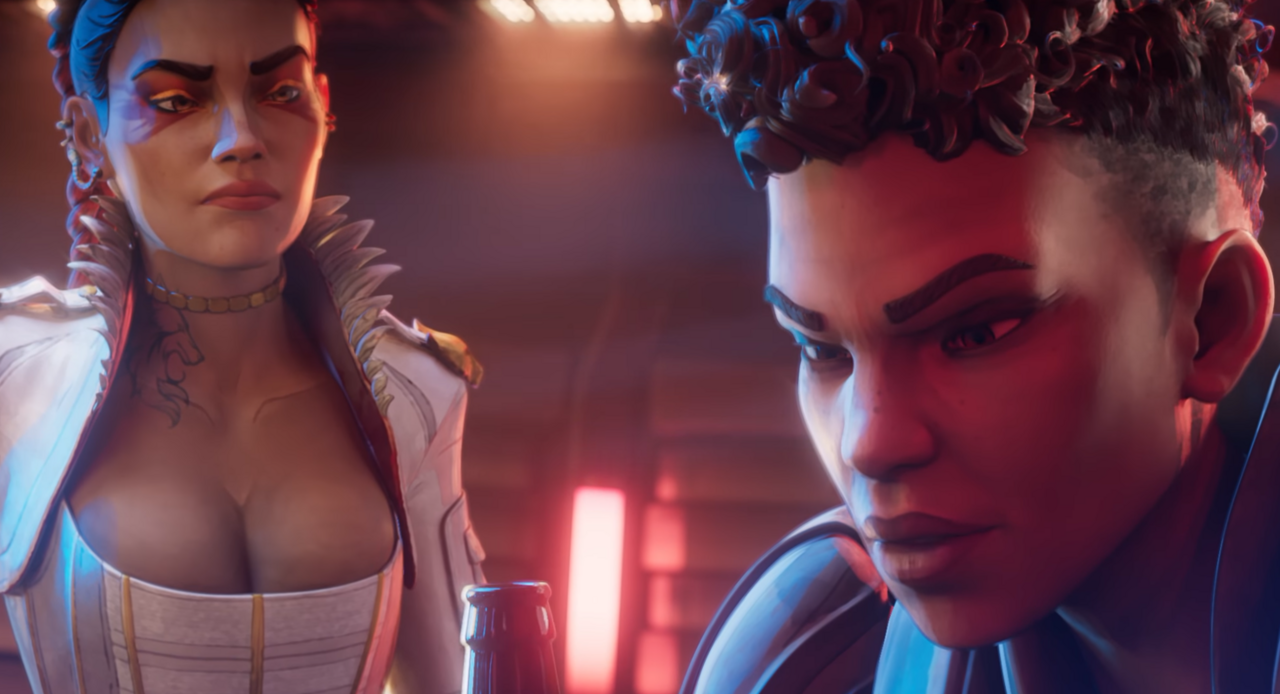Hot Drop: How Apex Legends Mobile Fits Into Apex Legends’ Lore
Hot Drop is GameSpot’s Apex Legends column, in which Jordan Ramée takes a closer look at Respawn’s battle royale to provide additional insight into the game’s evolution, as well as dive deeper into its episodic storytelling and characters.
Man, I haven’t written a Hot Drop in a hot minute. And for that, I apologize. Y’all deserve regular opportunities to get in the comments and tell me how absurd my many Apex Legends’ theories are, or how I’m 100% correct in my prediction that the Apex Games are moving to the moon of Seer’s home planet, Boreas, in Season 15. To make up for my absence, let’s talk about something spicy, like Apex Legends Mobile lore.
Apex Legends Mobile has been a tricky topic for Apex Legends lore hounds because it seemingly goes against a lot of the established history and storyline of Respawn’s battle royale. In Apex Legends Mobile, the legends fight on the original versions of Kings Canyon and World’s Edge, which makes little sense given how both have been regularly destroyed and rebuilt over the seasons in the console/PC game.
Some folks originally theorized that Apex Legends Mobile may take place in the past, prior to the devastation that occurred on these maps in Apex Legends. But that can’t be the case, given that the legends first traveled to World’s Edge because Kings Canyon had been partially destroyed and needed to be rebuilt. And Loba, who was added to Apex Legends Mobile post-launch, coincided with the destruction of Skull Town and Thunderdome on Kings Canyon. Yet, if you play Apex Legends Mobile, both landmarks continue to stand.
It certainly doesn’t help that Apex Legends Mobile has exclusive legends–Fade and Rhapsody–which begs the question as to why they haven’t factored into Apex Legends’ story up to this point and continue to be left out of every subsequent Quest storyline, Twitter comic, and cinematic trailer.
For all intents and purposes, Apex Legends Mobile and Apex Legends appear to be a part of completely different universes. Which, granted, could be the case, given that the Titanfall universe has a multiverse of realities thanks to Apex Legends. However, I think it’s more fun to imagine that the two games do exist within the same universe.
After all, why else would Apex Legends Mobile lead writer Mike Rosenthal tell me that his team and the Apex Legends writing team share their work with one another? “We share our work and seek feedback during every step of development,” Rosenthal said. “This helps ensure our new characters fit well within the established Apex universe.” If you’re putting in the effort to make the lore and characters of two games work within the same space, I think it warrants trying to make the two of them fit within the same universe–even if the maps and characters seem to be implying the opposite.
The best explanation for how the two games fit together is that Apex Legends Mobile’s maps aren’t real, and are instead virtual battlegrounds created as some sort of training field for the legends and would-be Apex Games participants.

In a tweet, Apex Legends world director Eduardo Agostini writes, “Now that we’ve established old [point-of-interests] can be resurrected/rebuilt in this old IMC Simulation Dome somewhere in the Outlands, what past POIs do you think should make a comeback–especially for a mode like Gun Run?”
The tweet is more a call for players to mention which of their favorite POIs that are no longer in Apex Legends should make a return in future limited-time modes, like the Beast of Prey Collection Event’s Gun Run. It hasn’t been confirmed to be an official lore tweet, it’s more of an asking-for-feedback tweet. But I like the idea of considering this a lore tweet. We’ve already had several examples over the years of old POIs returning to Apex Legends for a limited time. We’ve even had entire maps that are no longer in the game come back, like the original Kings Canyon and World’s Edge maps returning to Apex Legends during the Genesis Collection Event.
In hindsight, it should have been impossible to play as Loba on the original Kings Canyon during the Genesis Collection Event, since she blew it up prior to that. But that’s not an impossibility if the Syndicate has indeed orchestrated a virtual training ground for the legends, appropriating an old IMC Simulation Dome to resurrect long-gone POIs and maps. And then, on occasion, broadcasting these training sessions from that dome to the rest of the Outlands as official Apex Games matches, which are the ones we play during limited-time events.

Such an explanation allows Apex Legends Mobile to better fit into the overall lore of Apex Legends because it recontextualizes what the mobile game is. Matches in the mobile game aren’t out in the world on the real Kings Canyon and World’s Edge–these matches are all being held in an IMC Simulation Dome. It’s an entirely separate league of the battle royale bloodsport that exists within the Apex Legends universe, much like the NBA and EuroLeague are both professional basketball leagues, but they’re entirely separate competitions.
So when the likes of characters such as Loba and Crypto came to Apex Legends Mobile as new characters, they weren’t doing so as brand-new competitors. They’ve been a part of the Apex Games that exist on the very real Kings Canyon, World’s Edge, Olympus, and Storm Point. But they’ve only ever participated in the virtual league in a limited capacity, likely as a means of training for the real deal. Now they’re in the virtual league in a more permanent capacity as official competitors.
If Apex Legends Mobile and Apex Legends cover different leagues of the same bloodsport, it would also explain why Apex Legends Mobile has features like AI-controlled opponents that fill in sparse lobbies. It’s the virtual league. Those entirely AI-composed squads you run into that are easy-as-heck to kill are opponents created by the simulation, almost like a virtual reality training program.

It also explains why simulacrum characters like Revenant and Ash don’t have boatloads to say about a character like Fade, who wears a simulacra suit. Or why an acclaimed DJ like Rhapsody hasn’t stepped up to talk to Vantage about her terrible music choices. I don’t think these characters participate in the same league, and, as such, they likely don’t run into each other all that often. And it would explain why Fade and Rhapsody aren’t in the cinematic trailers or Quest storylines for Apex Legends, as that’s a whole different competition from the one they fight in. I’m sure that’s what they strive for–Respawn can’t call Fade and Rhapsody “mobile-first legends” in all the marketing material and then expect me to not think they won’t be in the console/PC game one day–but for now, they’re only good enough for the virtual competition. Both video games are the Apex Games, they’re just different leagues of the Apex Games.
And until Respawn actually steps up and explains how Apex Legends and Apex Legends Mobile are connected and exist within the same time and place, that’s the reasoning I’m going with. But if you have a better theory, I’m all ears in the comment section below.
The products discussed here were independently chosen by our editors.
GameSpot may get a share of the revenue if you buy anything featured on our site.
For all the latest Games News Click Here
For the latest news and updates, follow us on Google News.

